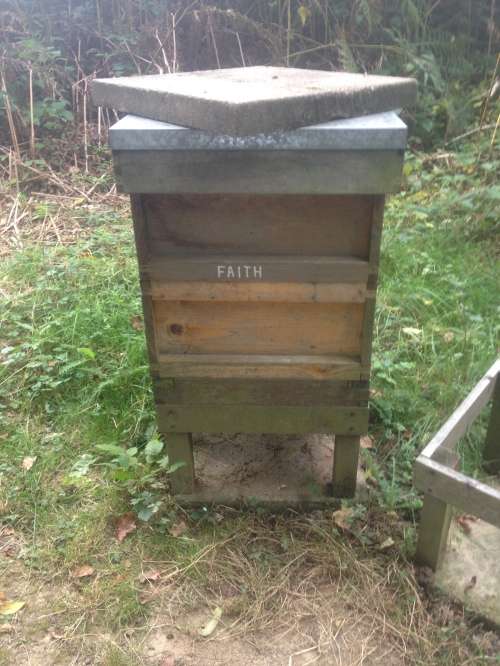“Perhaps the one stage in bee-keeping that requires the least protection and minimum of courage is “swarm catching” – that is, taking natural swarms after they have alighted in a cluster on a bush or other object they have chosen for the purpose. To me, it is one of the most interesting sights in Nature to watch a swarm leaving the parent stock, rising on the wing, and performing beautiful, mazy evolutions like a country dance mid-air, to the accompaniment of a soft, melodious, gentle hum, so indicative of peace, goodwill, and enjoyment at the prospect of establishing a successful home of their own; the main body keeping up these beautiful movements whilst the scouts are flying hither and thither in search of a suitable spot on which to alight; and then to see them hasten to a bush in thousands, and threading in and out amongst foliage, and now here, and there, until the scouts trumpet forth the call to assemble. I have never yet discovered that call, but it must be well known to the bees; for when the spot on which to alight is found, and the call is made, you will see all the bees that are on the wing head towards it, even those that form the most distant circle.

When the place of assemblage is found, what a change takes place in their song! from the gentle, peaceful hum to one of ecstatic delight. Note again, if the bees have made up their mind to go farther afield to form a new home, there will be a change in their movements and their song. Instead of making easy, graceful movements to and fro. the whole swarm will become agitated, the scouts will be called in, and their song becomes one of great disappointment, not to them, but to you, when you see your cherished hope rising in the air like a solid mass, and with a sharp cry and rapid movement they make for – you know not where. “But,” you say, ” I was given to understand that bees were always led by the queen – that she gave the call, and directed their movements; – is not that why they beat the tom-tom or ring the frying-pan with the door key?” Not a bit of it. That is an old superstition, grown out of a custom declaring the ownership of a swarm of bees when on the wing. It was equal to the ringing of a bell and saying, “This is to give notice these bees belong to me.” I have more than once seen the queen on a leaf some feed from where the swarm was clustering. I have seen her parading to and fro on a rail while the swarm was clustering on the post, the bees paying not the slightest attention to her. At other times I have seen her alight on the cluster and burrow in amongst them. Evidently she has been on the wing for some time after the main body had settled.”
From: Australian Beelore and Bee Culture by Albert Gale (Late Bee Expert and Lecturer on Apiculture to the New South Wales Government). Published in 1912. Extracted from: Chapter XV – Swarm Catching, Hiving and Transferring pp,86-89
Read Full Post »



